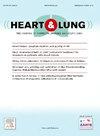通过单细胞分析和孟德尔随机化确定肺部疾病的治疗靶点
IF 2.6
4区 医学
Q2 CARDIAC & CARDIOVASCULAR SYSTEMS
引用次数: 0
摘要
全球肺部疾病的增加需要确定治疗靶点,然而整合不同病理和肺功能特征的系统研究来发现因果靶点仍然有限。目的确定12种肺特征(10种疾病,2种功能指标:强迫肺活量[FVC]和FEV1/FVC比值)的因果治疗靶点,并验证其遗传作用。方法通过深度学习模型Geneformer对来自人类肺细胞图谱的单细胞转录组学数据进行分析,模拟微扰,生成泛肺疾病靶标谱。来自肺组织和全血的顺式表达数量性状位点(cis-eQTL)数据与孟德尔随机化(MR)和共定位分析相结合,以确定致病基因的优先级。一个独立的验证队列证实了可重复性。结果计算机治疗分析确定了12个肺性状中3570个基因的治疗靶标谱。在这些性状中,肺癌、FVC和FEV1/FVC比值具有确定的因果关系的基因。具体来说,2个基因与肺癌有关,8个与FVC有关,20个与FEV1/FVC比值有关。这些发现通过共定位测试得到验证,并在一个独立的验证集中得到证实。结论本研究确定了30个肺癌和肺功能特征的推定因果治疗靶点,为肺部疾病靶向治疗的开发提供了系统和坚实的基础。本文章由计算机程序翻译,如有差异,请以英文原文为准。
Therapeutic targets in lung diseases identified through single-cell analysis and mendelian randomization
Background
The global rise in lung diseases necessitates identification of therapeutic targets, yet systematic studies integrating diverse pathologies and lung function traits to uncover causal targets remain limited.
Objectives
To identify causal therapeutic targets across 12 lung traits (10 diseases, 2 functional measures: Forced Vital Capacity [FVC] and the FEV1/FVC ratio) and validate their genetic roles.
Methods
Single-cell transcriptomic data from the Human Lung Cell Atlas were analyzed via Geneformer, a deep learning model, to simulate in silico perturbations and generate a pan-lung disease target spectrum. Cis-expression quantitative trait loci (cis-eQTL) data from lung tissue and whole blood were integrated with Mendelian randomization (MR) and colocalization analyses to prioritize causal genes. An independent validation cohort confirmed reproducibility.
Results
The in silico treatment analysis identified a therapeutic target spectrum of 3570 genes across 12 lung traits. Of these traits, three—lung cancer, FVC, and the FEV1/FVC ratio—had genes with causal relationships established. Specifically, 2 genes were linked to lung cancer, 8 to FVC, and 20 to the FEV1/FVC ratio. These findings were validated via colocalization testing and confirmed in an independent validation set.
Conclusions
This study identified 30 putative causal therapeutic targets for lung cancer and lung function traits, offering a systematic and robust foundation for the development of targeted therapies for lung diseases.
求助全文
通过发布文献求助,成功后即可免费获取论文全文。
去求助
来源期刊

Heart & Lung
医学-呼吸系统
CiteScore
4.60
自引率
3.60%
发文量
184
审稿时长
35 days
期刊介绍:
Heart & Lung: The Journal of Cardiopulmonary and Acute Care, the official publication of The American Association of Heart Failure Nurses, presents original, peer-reviewed articles on techniques, advances, investigations, and observations related to the care of patients with acute and critical illness and patients with chronic cardiac or pulmonary disorders.
The Journal''s acute care articles focus on the care of hospitalized patients, including those in the critical and acute care settings. Because most patients who are hospitalized in acute and critical care settings have chronic conditions, we are also interested in the chronically critically ill, the care of patients with chronic cardiopulmonary disorders, their rehabilitation, and disease prevention. The Journal''s heart failure articles focus on all aspects of the care of patients with this condition. Manuscripts that are relevant to populations across the human lifespan are welcome.
 求助内容:
求助内容: 应助结果提醒方式:
应助结果提醒方式:


